25+ SAMPLE Construction Inspection Checklist
-
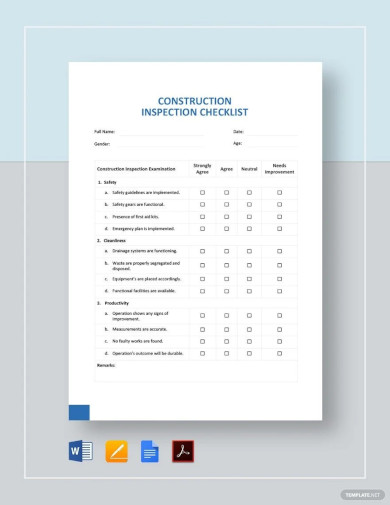
Construction Inspection Checklist
download now -
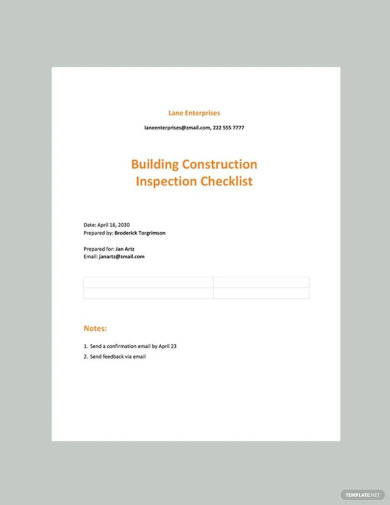
Building Construction Inspection Checklist
download now -

Construction Site Inspection Checklist
download now -
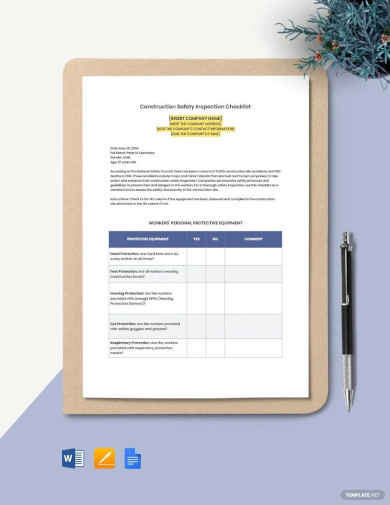
Construction Safety Inspection Checklist
download now -
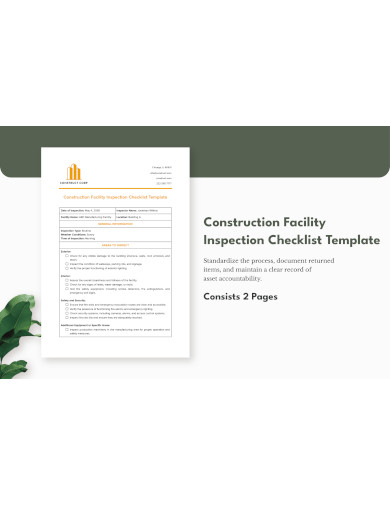
Construction Facility Inspection Checklist
download now -
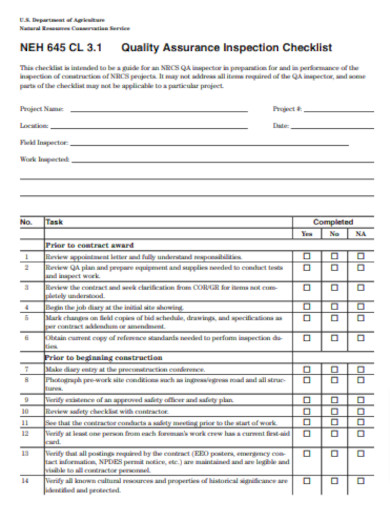
Construction Quality Control Inspection Checklist
download now -
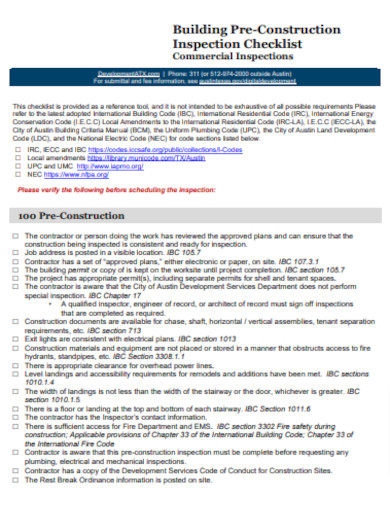
Building Pre-Construction Inspection Checklist
download now -
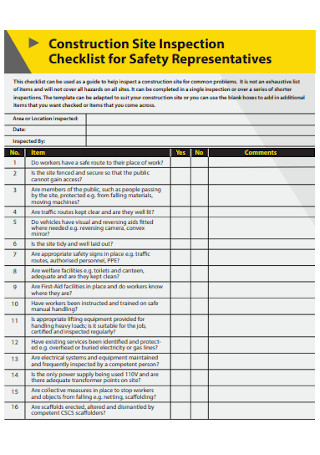
Construction Site Safety Inspection Checklist
download now -
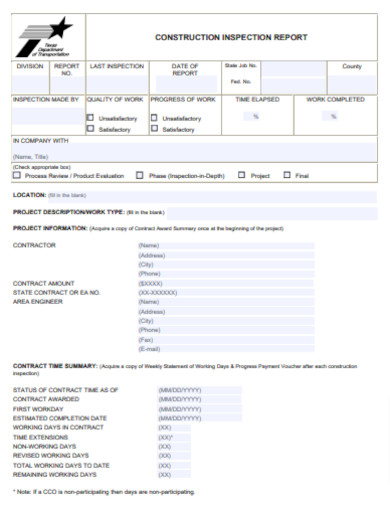
Construction Inspection Checklist Report
download now -
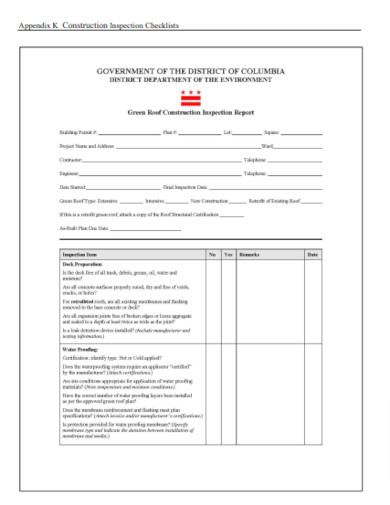
Simple Construction Inspection Checklist
download now -

Basic Construction Inspection Checklist
download now -
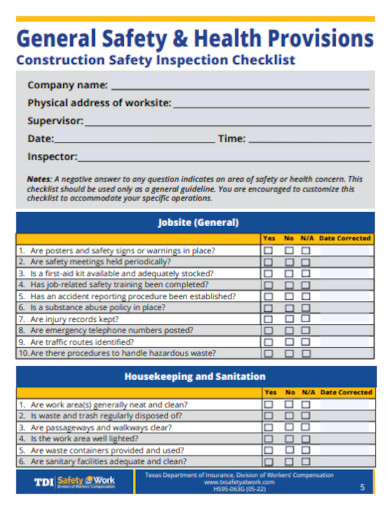
Construction Inspection Health Checklist
download now -
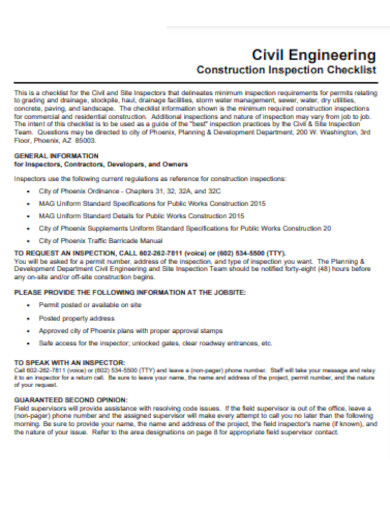
Civil Engineering Construction Inspection Checklist
download now -
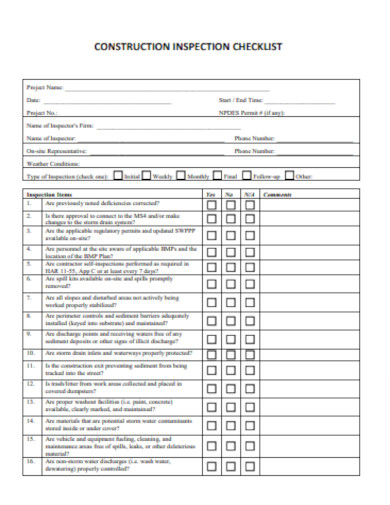
Sample Construction Inspection Checklist
download now -
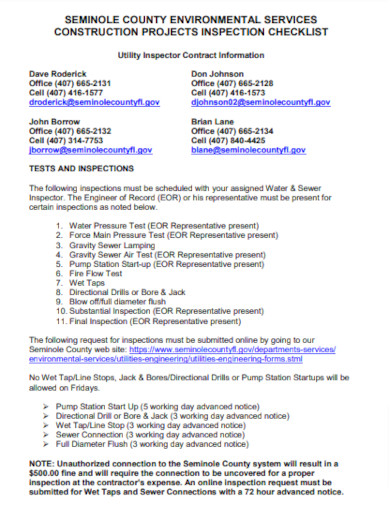
Construction Project Inspection Checklist
download now -
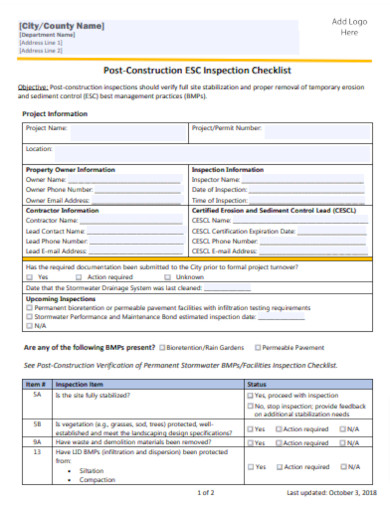
Post-Construction Inspection Checklist
download now -
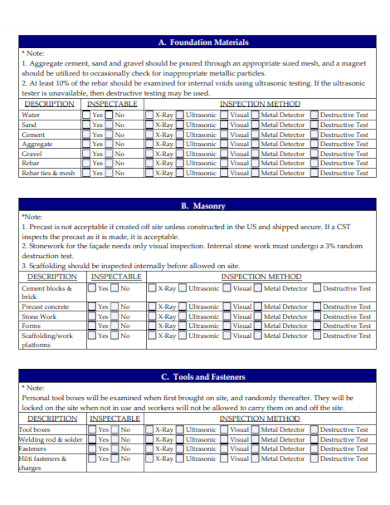
Construction Inspection Materials Checklist
download now -
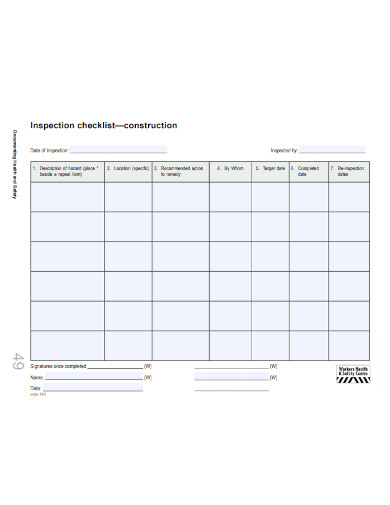
Construction Inspection Checklist Outline
download now -
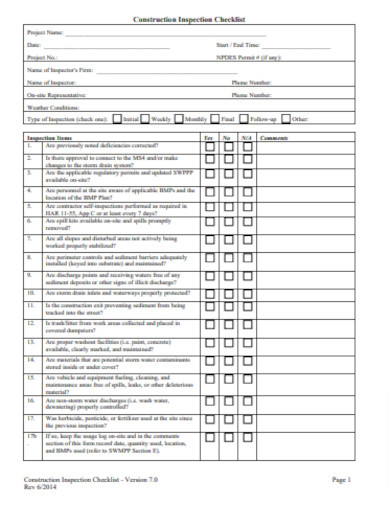
Printable Construction Inspection Checklist
download now -
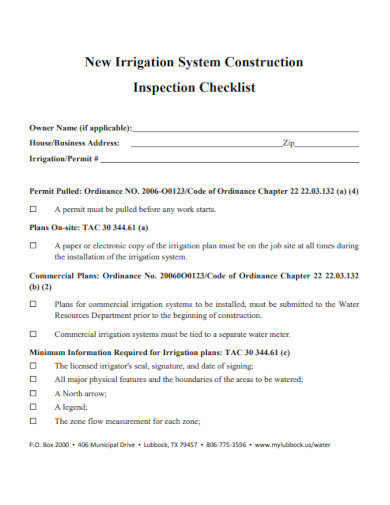
New Irrigation System Construction Inspection Checklist
download now -
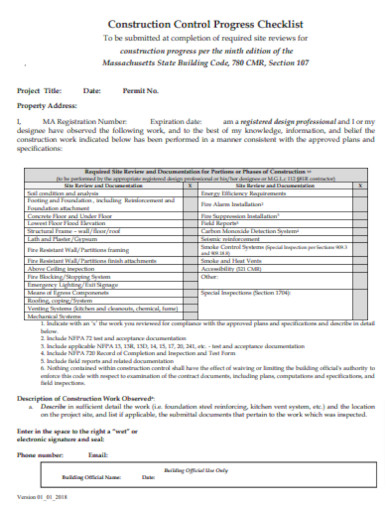
Construction Inspection Control Progress Checklist
download now -
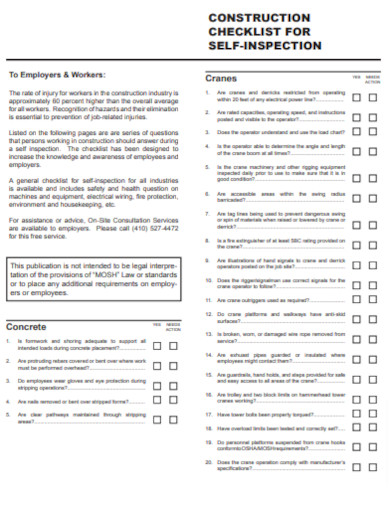
Construction Self-Inspection Checklist
download now -
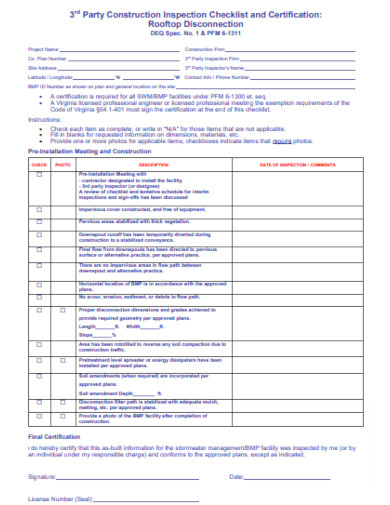
3rd Party Construction Inspection Checklist
download now -
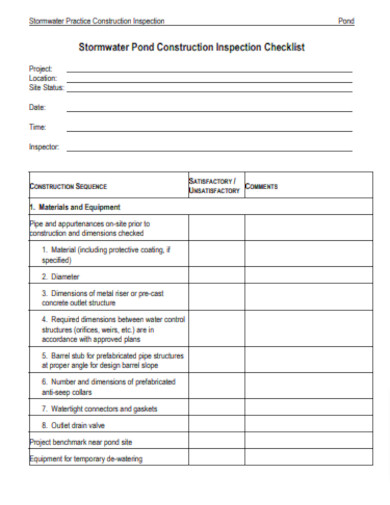
Stormwater Pond Construction Inspection Checklist
download now -
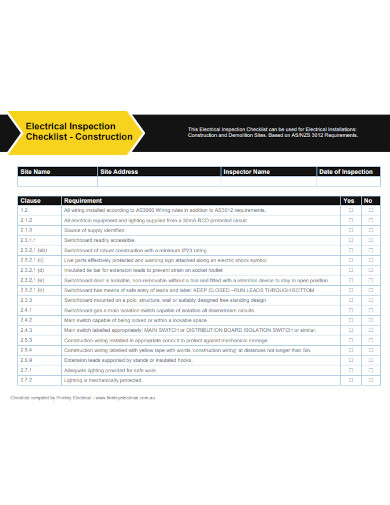
Electrical Construction Inspection Checklist
download now -
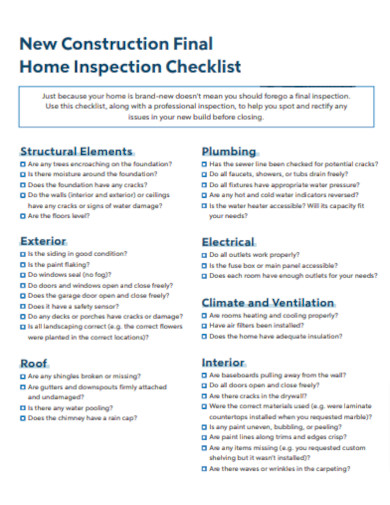
Construction Home Inspection Checklist
download now
FREE Construction Inspection Checklist s to Download
25+ SAMPLE Construction Inspection Checklist
Definition
Key Components of a Construction Inspection Checklist:
Benefits of Using a Construction Inspection Checklist
Tips for Implementing an Effective Checklist
Enhance your Construction Inspection Checklist
How often should the checklist be updated?
Who is responsible for completing the construction inspection checklist?
Can a digital platform replace the traditional paper-based checklist?
Does one checklist fit all types of construction projects?
How do I ensure that the checklist is comprehensive?
Is a construction inspection checklist legally binding?
How does the checklist cater to environmental concerns?
Can the checklist also serve as a documentation tool for the project’s progress?
Definition
A construction inspection checklist is a comprehensive tool that lists all the items, processes, and areas that need to be inspected in a construction project to ensure adherence to quality control, safety, and project specifications. Ensuring quality in construction isn’t just about using the right materials or adhering to design plans; it’s also about maintaining a keen eye for detail at every stage. An essential tool to ensure this detail-oriented approach is the construction inspection checklist. This comprehensive guide will dive into the importance, components, and benefits of having a well-structured checklist at hand.
Key Components of a Construction Inspection Checklist:
- Preliminary Checks: Before diving into the construction process, it’s crucial to ensure that all required permits, plans, and documentation are in place.
- Site Safety: This includes verifying that all safety measures, like barriers, warning signs, and personal protective equipment, are available and in use.
- Material Inspection: Ensure that the materials used align with the specified quality standards and are stored correctly to prevent damage or degradation.
- Workmanship: This section checks the quality of work, ensuring that it meets the design specifications and quality benchmarks set at the project’s outset.
- Equipment Check: Confirm that all machinery and tools are in good working order, regularly maintained, and operated by trained personnel.
- Environmental Controls: For projects emphasizing sustainability, this section checks for erosion controls, waste management practices, and other environment-related measures.
- Subcontractor Work: Specialized tasks managed by subcontractors should be inspected to ensure they adhere to the project’s overall quality standards.
- Final Checks: As the project nears completion, a thorough review ensures all systems are operational, and every component of the structure aligns with the design plans.
Benefits of Using a Construction Inspection Checklist
The construction industry, with its myriad processes, deadlines, and intricate details, thrives on precision and predictability. To steer this mammoth vessel with finesse, a construction inspection checklist emerges as the compass, guiding every phase to its successful culmination. Here’s a closer look at the tangible and intangible advantages of wielding this potent tool:
1. Systematic Oversight:
A checklist organizes tasks, ensuring a systematic approach. This structured format guarantees that no stone is left unturned, no bolt unchecked, and no process overlooked.
2. Elevated Safety Standards:
By emphasizing routine inspections of equipment, materials, and workmanship, a checklist fortifies the commitment to safety, significantly reducing on-site accidents and potential hazards.
3. Enhanced Compliance Adherence:
Building regulations and codes vary across regions. A checklist tailored to these specifics ensures projects are compliant, sidestepping potential legal complications and hefty fines.
4. Quality Assurance:
Ensuring materials and workmanship align with stipulated standards, the checklist becomes an emblem of quality. The end result? Structures that resonate with excellence and durability.
5. Streamlined Project Management:
By offering a clear snapshot of completed tasks and pending ones, checklists facilitate efficient resource allocation. This, in turn, paves the way for seamless project timelines and optimal budget utilization.
6. Clear Communication:
With every team member accessing the same checklist, it eliminates ambiguities. Stakeholders, from architects to contractors, can synchronize their efforts, fostering a harmonious working environment.
7. Early Problem Detection:
Issues are inevitable in construction. However, a checklist can unearth potential problems in their infancy, allowing for timely interventions that curb larger complications and associated costs.
8. Cost Effectiveness:
By reducing oversights, enhancing resource allocation, and mitigating reworks, the checklist indirectly contributes to significant cost savings.
9. Documentation and Accountability:
A meticulously filled checklist acts as a record, detailing each inspection. It fosters a culture of accountability, where every stakeholder is answerable to their tasks.
10. Client Confidence:
Knowing that a structured system is in place to ensure quality can significantly boost client confidence and satisfaction, positioning the construction firm as a trustworthy partner for future endeavors.
Tips for Implementing an Effective Checklist
Embarking on the journey of construction without a checklist is akin to navigating uncharted waters without a compass. While the essence of a construction inspection checklist is undeniable, its effectiveness hinges on its proper implementation. Here are some tried-and-tested strategies to make the most of this indispensable tool:
1. Customization is Key:
Every construction project is unique, with its own set of challenges and specifications. Tailor your checklist to match the specifics of the project, taking into account its scale, location, and purpose.
2. Prioritize Clarity:
Draft the checklist with clear, concise language. Avoid jargon unless it’s industry-specific and understood by all stakeholders. Ambiguity can lead to misinterpretations and oversights.
3. Embrace Digital Transformation:
Modern technology offers checklist apps and software that allow for real-time updates, cloud storage, and multi-user access. Leveraging these tools can significantly enhance efficiency.
4. Keep it Dynamic:
Construction methods, materials, and regulations are constantly evolving. Periodically review and update the checklist to ensure it remains relevant and comprehensive.
5. Segment and Categorize:
Break down the checklist into specific categories, like ‘Foundation,’ ‘Utilities,’ or ‘Finishing.’ This offers a structured approach, making it easier to track and manage.
6. Training and Familiarization:
Ensure that everyone, from site supervisors to laborers, understands the importance of the checklist and knows how to use it. Occasional training sessions can be invaluable.
7. Feedback Loop:
Post-inspection, gather feedback from the team about the checklist’s effectiveness. Refining the tool based on ground-level input ensures it remains practical and relevant.
8. Use Visual Aids:
Incorporate diagrams, color codes, or even photographs wherever possible. Visual aids can often convey what words cannot, offering clarity and precision.
9. Regular Audits:
Have periodic reviews of completed checklists. This not only ensures adherence but also identifies patterns, highlighting areas that may consistently pose challenges.
10. Set Clear Accountabilities:
Define who is responsible for each part of the checklist. Accountability ensures that tasks aren’t just checked off but are executed with due diligence.
11. Emphasize Documentation:
Whether it’s about the quality of materials used, issues encountered, or deviations from the plan, ensure that every detail is documented within the checklist.
12. Stay Adaptive:
Sometimes, on-the-ground realities may necessitate deviations from the plan. While the checklist is a guide, it shouldn’t be so rigid that it becomes impractical. Flexibility, when warranted, can be a virtue.
By giving meticulous attention to the design, dissemination, and diligence in following a construction inspection checklist, construction professionals can transform this simple tool into a powerhouse of efficiency, quality assurance, and operational excellence.
Enhance your Construction Inspection Checklist
The continuous evolution of the construction landscape mandates that tools, techniques, and protocols, including the quintessential construction inspection checklist, undergo periodic refinement. This not only ensures that you remain in step with industry advancements but also elevates the efficiency and effectiveness of your construction operations. Let’s explore actionable strategies to polish your checklist:
1. Goal-Oriented Structuring:
Begin by crystallizing the primary objectives of the project. With clear goals in mind, tailor your checklist to echo these priorities, ensuring every item aligns with the overarching mission.
2. Digital Integration:
Migrate from paper to digital. Leverage the plethora of digital tools available. From real-time syncing to data analytics, modern platforms can offer insights that a traditional checklist might miss.
3. Precision in Descriptions:
Each item on your checklist should be precise, leaving no room for ambiguity. For example, instead of “Check foundation,” opt for “Inspect foundation for cracks and proper curing.”
4. Progressive Layering:
Adopt a hierarchical format. Start with broader categories like ‘Foundation’ or ‘Electrical,’ and then drill down into detailed sub-categories. This lends clarity and a systematic flow.
5. Visual Enhancements:
Incorporate images, infographics, or flowcharts where relevant. Visual cues expedite comprehension and can offer clarity where words might fall short.
6. Feedback Integration:
Regularly solicit feedback from ground personnel and management. Those who interact with the checklist daily can offer invaluable insights into its practicality and areas of improvement.
7. Regular Reviews and Updates:
Set aside time periodically to review the checklist against industry standards, technological advancements, and evolving construction techniques. Updates ensure your checklist remains contemporary.
8. Fluidity in Approach:
While it’s essential to have a structured checklist, ensure there’s room for adaptability. Unexpected challenges may necessitate slight deviations; your checklist should accommodate these nuances.
9. Consistent Training:
As you refine and modify the checklist, periodically organize training sessions. This ensures everyone is on the same page, and the checklist is utilized to its maximum potential.
10. Emphasis on Sustainability:
With the rising importance of green construction and sustainability, integrate sections in your checklist that focus on environmentally friendly practices and materials.
11. Collaboration with Experts:
Occasionally, bring in external experts or consultants to review your checklist. A fresh pair of eyes can identify gaps or areas of enhancement that internal teams might overlook.
12. Risk Management Inclusion:
Augment your checklist with risk assessment components. Identifying potential risks early on ensures timely mitigation and a smoother construction process.
How often should the checklist be updated?
While there’s no fixed rule, it’s advisable to review and potentially update the checklist periodically, especially when there are changes in construction methods, materials, or regulations.
Who is responsible for completing the construction inspection checklist?
Typically, the site supervisor or the project manager, alongside specific professionals (like electricians for electrical checks), are responsible. However, external auditors or inspectors might also use it during their evaluation.
Can a digital platform replace the traditional paper-based checklist?
Absolutely. Many modern construction projects have migrated to digital platforms due to their real-time updating capabilities, ease of sharing, and storage advantages.
Does one checklist fit all types of construction projects?
No. While there may be common elements, each construction project has unique aspects. The checklist should be tailored to fit the specifics of each project.
How do I ensure that the checklist is comprehensive?
Collaboration is key. Engage all stakeholders, from architects to ground workers, and solicit their feedback. Also, consider integrating industry standards and seeking expert consultation.
Is a construction inspection checklist legally binding?
While the checklist itself might not be legally binding, certain checks within it can be based on legal and regulatory requirements. Non-compliance with these checks can lead to legal repercussions.
How does the checklist cater to environmental concerns?
Modern checklists often incorporate sections dedicated to sustainability and environmental checks, ensuring that the construction adheres to green building standards and local environmental regulations.
Can the checklist also serve as a documentation tool for the project’s progress?
Definitely. A well-maintained checklist can chronicle the project’s journey, capturing details of inspections, dates, issues identified, and corrective measures taken.
A Construction Inspection Checklist isn’t just a list of to-dos; it’s a dynamic tool ensuring that quality, safety, and compliance remain at the forefront of every construction project. By understanding its components and benefits, construction professionals can harness its power, guaranteeing projects that stand the test of time.
